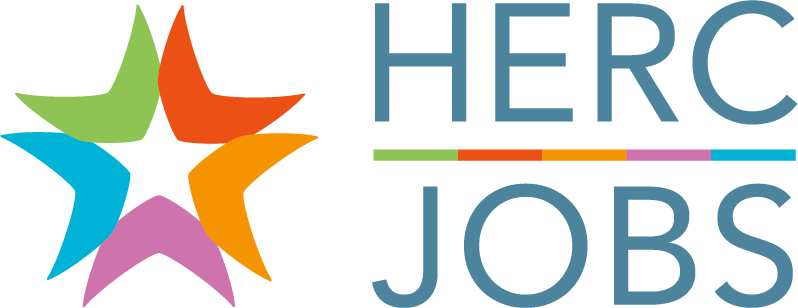Drafting a Career-Change Resume
The average person will have 12 jobs in his or her lifetime—and, in many cases, at least a few of those positions constitute true career changes. In fact, 75 percent of Generation Xers say they’ll likely return to school at some point in their careers—with their sights set on changing roles—and 80 percent of workers in their 20s want to change careers.
But, while a career change puts you in good company, positioning yourself and your prior experience can be challenging. The more competitive the market, the tougher it may be to cut through the clutter and ensure your resume is noticed—especially in a stack of CVs that seem to be 100 percent in-step with the specific role and responsibilities.
The simplest and most effective solution is to unpack your soft skills and other transferable skills—proficiencies that easily translate from industry to industry and are just as highly sought in your new potential field. By telling your professional story and organically weaving in these critical traits and experiences, you’ll create instant relevance in a hiring manager’s mind and better position yourself to get an interview—and possibly the job.
Some Great Steps for Getting Started
First, Research. Every industry is different. Even if you’re shifting niches within the same general area, be sure to do your homework regarding the required skills, training, certifications, and in-demand experiences. A quick search on HERC Jobs or a specific institution’s job board should give you a cursory sense. Jot down the key points and requirements—you’ll need to have those on-hand as you start drafting your resume.
Second, Compare and Contrast. Armed with your list of industry must-haves, the next step is to determine how your background compares and contrasts. For example, an analyst may be well-versed in distilling complex research findings into simple, actionable trends, and that’s also an important skill for a teacher or someone in a sales or marketing role to have.
As you work through your list of required skills and experiences, chances are that you’ll spot more than a few that connect your current career path to your new trajectory. Make note of each—these will be central to your updated resume and, more specifically, used to fill in the SKILLS/STRENGTHS section of your resume.
Third, Determine Your Objective. A solid career-change resume starts with a clear-cut objective: a short statement at the top of your resume that definitively states why you’re applying for the job. Some examples include:
- To transition into an executive-level position in graduate admissions that, specifically, leverages my experience in diversity initiatives and staff training.
- To bring my decade-plus of experience working with students, educators, and high-level donors and alumni to a student-affairs role.
- To shift from a research-focused position to a classroom-based teaching role, enabling me to bring my experience, insights, and unique presentation approach to graduate students.
Each of these statements weaves in why the candidate is right for the position, without overtly saying it, and hints at his or her skills and qualifications. Done right, a strong objective should drive hiring managers to lean in and read on—exactly what you want.
Fourth, Draft Your Resume. Many people who are making career changes opt to use a functional resume. While most resumes are chronological—listing your most current experiences first and continuing backward—a functional resume brings your skills and experiences to the forefront. By pulling your best skills forward as they relate to the job for which you’re applying, you can better highlight why you make sense for the role. For example, a functional resume might showcase your research and presentation skills from all previous roles as well as your training, academic work, and supporting pursuits. For a functional resume, the format would be:
OBJECTIVE
SKILLS/STRENGTHS (Include relevant skills and experiences as they relate to the role.)
PROFESSIONAL EXPERIENCES (Break down critical experiences and skills into a few relevant buckets. Under each header, bullet out related experiences from previous roles. See examples below.)
Educational Work
Related Experience
Project Management
Related Experience
Managerial Experience
Related Experience
Technology & Administrative Support
Related Experience
WORK HISTORY (List the positions in which you acquired the bulleted experiences above. Because you’ve already explained your experiences above, there’s no need to elaborate here.)
Associate Professor, University of San Jose, San Jose, CA (2011-2017)
Assistant Professor, Colorado College of Engineering, Boulder, CO (2003-2011)
Graduate Assistant, University of Grand Rapids, Grand Rapids, MI (2000-2003)
EDUCATION & TRAINING (Conclude with your education and any relevant training or certifications.)
Finally, Send With Confidence. The final step is to send your resume—with confidence—to prospective employers. Many hiring managers and human resource (HR) leaders are searching for candidates who are good cultural fits for an organization or institution. Beyond that, they want engaged, active doers who are ready to dive in and learn. Often, a candidate who’s making a career change can check those boxes.
Additionally, candidates from other backgrounds and industries may be positive forces for change by bringing unique perspectives to the departments or divisions. It’s easy to become caught up in the status quo when you’re surrounded by like-minded professionals. An outside hire can shake things up for the better, pushing everyone to consider new perspectives and think differently—often, bringing about exciting innovations and new ways of looking at old problems. Be that person, and you’ll be in-demand—no matter what your desired next step.
Thinking about your next career move?
Check out our latest job postings or create a free account to save job searches, upload your resume, and get daily job alerts.
